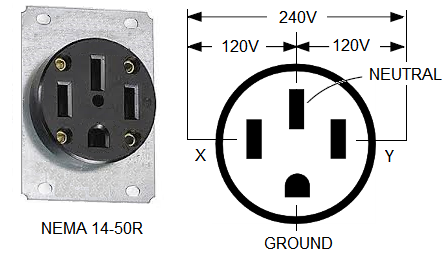
Electric is a registered trademark of Mr. Typically, the wires leading to a receptacle will be 14-gauge and the circuit breaker or fuse will be 15 amps. Check the gauge of the wire and the circuit amperage. If you don’t know which one is in your outlet, examine the wiring to find out what size you need.

Please contact the franchise location for additional information. There are two sizes of 120-volt outlet receptacles. Electric franchise locations operate in compliance with licensing and trade requirements, which may vary across states, counties, municipalities, provinces, or other local jurisdictions. Services are offered by independently owned and operated franchise locations which may be impacted by State and local laws.
#120 VOLT OUTLET REGISTRATION#
If you are a resident of or want to locate a franchise in one of these states, we will not offer you a franchise unless and until we have complied with applicable pre-sale registration and disclosure requirements in your state. Currently, the following states regulate the offer and sale of franchises: California, Hawaii, Illinois, Indiana, Maryland, Michigan, Minnesota, New York, North Dakota, Oregon, Rhode Island, South Dakota, Virginia, Washington, and Wisconsin. This information is not intended as an offer to sell, or the solicitation of an offer to buy, a franchise. Schedule an appointment online or call us at (844) 866-1367 today. We can also re-wire your older appliances with four-prong plugs so they work perfectly with your new outlets. If you would like 240-volt outlets installed in your home, including for your electric car, contact Mr. The other most common type of electrical outlet is the 15-amp outlet.

Instead, you need to connect these appliances and devices to a high voltage outlet. It’s recommended that you use 20 amp outlets to power your kitchen appliances properly. Rewiring your appliances with four-wire plugs and installing four-prong 240-volt outlets will solve any safety or compatibility issues. The smaller 120-volt outlets used for light-duty devices, like chargers, hair dryers, or TVs, do not provide enough power for larger appliances and devices that have a high power draw. The additional prong on four-prong outlets adds a ground wire, providing additional safety against electrical shock.

Older three-prong outlets were designed to contain two live wires and one neutral. Recently, 240-volt outlets have switched from three-prong to four-prong. Newer four-prong outlets have an “L” on top, two vertical side holes, and a single half-circle hole on the bottom for the ground wire. Older three-prong outlets have a hole like a backward “L” on top and two diagonal holes on the sides. You may need to have a 240-volt outlet installed if you purchase one of the following items:Ĭompared to standard 120-volt receptacles, 240-volt outlets are larger, with rounded tops, and three or four holes depending on the age of the outlet. The 240-volt outlets are intended for use specifically with heavier appliances that need more electricity to operate. Many large, motor-driven appliances run more efficiently with a 240-volt power supply.


 0 kommentar(er)
0 kommentar(er)
